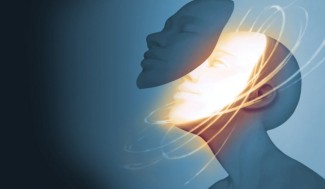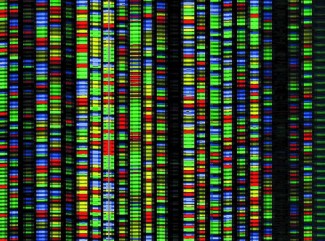A research team involving neuroscience researchers and clinicians from the CEA, the Foch Hospital, the University of Versailles Saint-Quentin-en-Yvelines, Inserm, the Collège de France and the Paris Brain Institute, has provided proof that deep brain stimulation can restore consciousness when it is impaired. This result, the fruit of more than 5 years of work in animals, would pave the way for clinical trials in patients who do not recover consciousness. It is published in Science Advances.
Consciousness is a dynamic and complex process that coordinates the activity of different brain regions, particularly the brainstem, the thalamus and the cortex.
There are two hierarchical levels of consciousness. The first is that of awakening, or vigilance, characterised by openness to the world. It corresponds to the activation of very deep structures of the brain nested in the brain stem. The second is “conscious access”, characterised by the conscious perception of an information. Each time we become aware of a piece of information, for example a musical note, this content of consciousness is encoded by the simultaneous activation of groups of neurons distributed in different areas of the cortex. Loss of consciousness has been linked to a strong disruption of communication between different areas of the cerebral cortex, and between the cortex and the thalamus, a region of the brain halfway between the brainstem and the cortex.
Brain imaging studies suggest that restoring these communications between the cortex and thalamus may be the key to recovery from chronic disorders of consciousness. Several teams around the world have come up with the idea of re-establishing them through electrical stimulation.
Although initial results had already shown that such stimulation could restore the first level of consciousness (the awake state), none had been able to demonstrate whether such stimulation could also restore the second level of consciousness, ‘conscious access’.
What if the thalamus centre was the right target to stimulate to restore the two hierarchical levels of altered consciousness? This is the hypothesis tested by the French research team behind this work published in Science Advances and involving the CEA, the Foch Hospital, the University of Versailles Saint-Quentin-en-Yvelines, Inserm, the Collège de France and the Paris Brain Institute.
Electrical stimulation of the thalamus restores lost consciousness
To test their hypothesis, the researchers applied general anaesthesia to a non-human primate in order to suppress the two components of consciousness, namely arousal and conscious access. A deep brain stimulation electrode, a device equivalent to that used in patients with Parkinson’s disease, was implanted beforehand. The result: during general anaesthesia, electrical stimulation of the central part of the thalamus woke up the anaesthetised animals.
The electrical stimulation immediately induced the clinical observation of eye opening, resumption of spontaneous breathing, and limb movements. Stopping the stimulation by cutting off the electrical current immediately put the animal back into a state of deep sedation, that of general anaesthesia. This experiment thus demonstrated that deep brain stimulation can restore the first level of consciousness.
Thanks to the technology of brain imaging by functional MRI, and also an examination by electroencephalography, the researchers succeeded for the first time in finely measuring, during stimulation of the thalamus, the two levels of consciousness (awakening and conscious access). They closely observed the brain activations of the animal during anaesthesia and during the periods of ‘awakening’ induced by the stimulation. In addition, headphones were used to make the primate listen to a series of different sounds in a complex composition. While the brain had lost its ability to integrate the complexity of the sound composition under the effect of deep anaesthesia, it regained this ability as soon as the brain stimulation was started. An algorithmic analysis applied to the functional MRI signal at rest (outside the periods of application of the sound compositions) was able to demonstrate that cerebral stimulation brought back to the brain a wealth of activity lost under general anaesthesia. Thus, brain stimulation of the thalamus was able to restore the two fundamental and hierarchical dimensions of consciousness.
This scientific work provides a key piece of evidence for future clinical trials in patients with chronic disorders of consciousness.
After a severe head injury or stroke, patients may never regain a normal state of consciousness. From the initial coma treated in intensive care, the patient moves on to a chronic state of altered consciousness for which there is no validated treatment. Hope could come from the neurosciences which, over the last twenty years, have made considerable progress in understanding the neurobiological phenomenon of consciousness.
Sources
Deep brain stimulation of the thalamus restores signatures of consciousness in a nonhuman primate model in Science Advances : https://www.science.org/doi/10.1126/sciadv.abl5547







